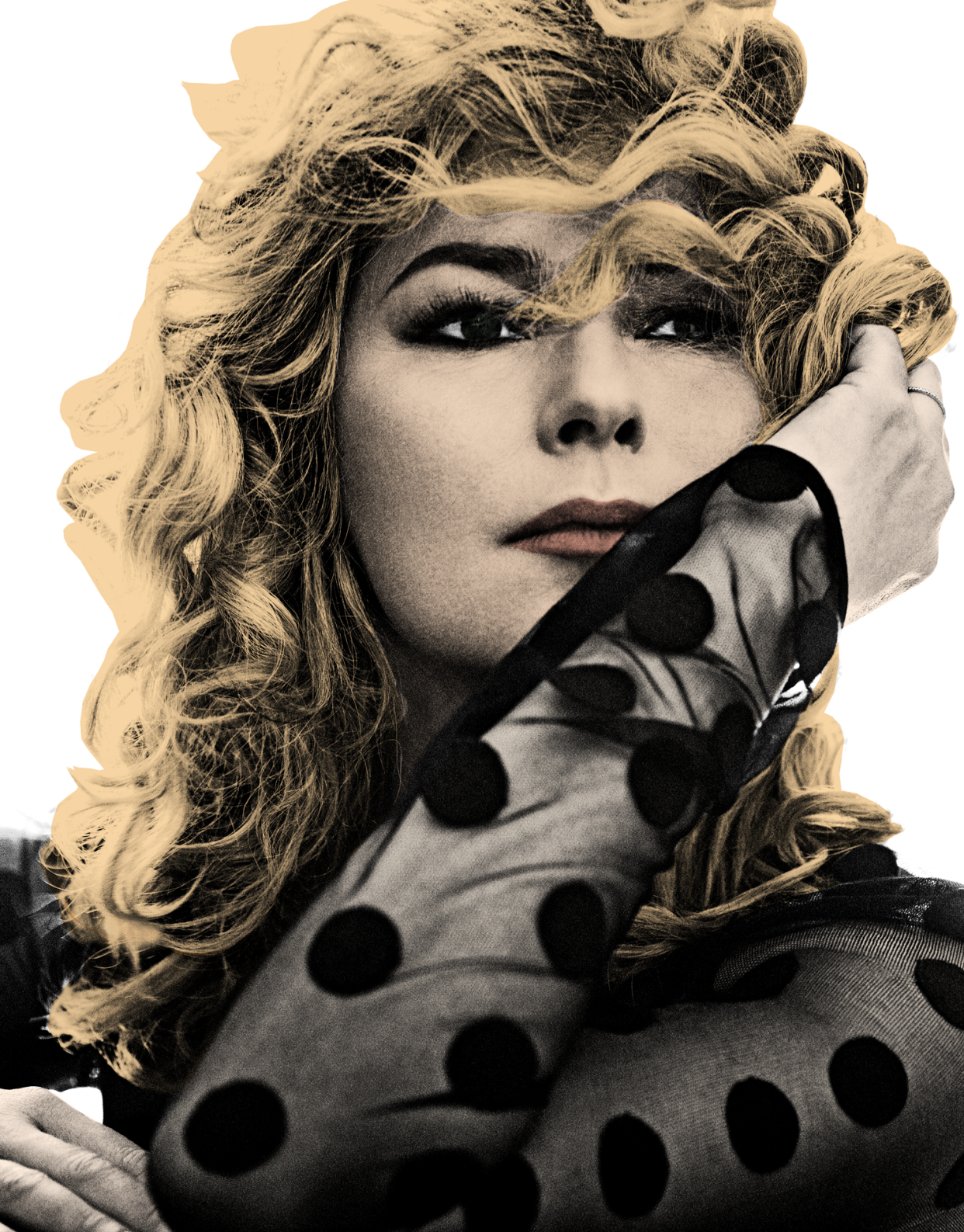The reinvention of Shania Twain: 'There's nothing worse than losing something that you're famous for'

“There’s nothing worse than losing something that you’re famous for.”
Shania Twain and I are on the phone. I am in a cramped phone booth in my downtown Manhattan office and Shania, as her publicity team tells me, is at her home in the Bahamas, where she’s taking press calls for her first album in 15 years, Now, which she wrote entirely on her own. Somewhere in space and time, the 10-year-old version of me has paused her Come On Over CD in my blue Discman with the anti-skip technology just long enough to freak out. But today-me is thinking about loss, and gain, and how mega-fame can catapult life into diametric extremes.
Twain has known great loss. As a girl growing up in rural Canada, she lost touch with her biological father — a man who once beat Shania’s mother so badly her grandmother didn’t recognize her. In 1987, at age 22, she unexpectedly lost her mother and stepfather when they were killed in a car accident, leaving Twain responsible for her three younger siblings and a cousin. In 2008, she lost her husband and musical partner, Mutt Lange, after she discovered he was having an affair with her best friend. But as we speak by phone on this winter afternoon, Twain is talking about a different kind of loss: the loss of her voice.

“It went quite rapidly,” she tells me, pegging the loss of her voice to the end of her “Up!” tour in 2004. In the months leading up to losing her voice, Twain had found a tick on her body while horseback riding in Virginia and was diagnosed with Lyme disease shortly thereafter. “I figured that my [lost] voice was associated with that,” Twain says, also mentioning that she figured the culmination of having the disease, parenting a toddler, and doing her multiyear international tour had fatigued her body to the point of vocal failure. “But my voice just never went right again no matter what I did,” she says. “It’s almost like I couldn’t sing anymore, and if I got up and tried to sing, I’d embarrass myself. I was too embarrassed to tell anybody that I’d lost my voice. So I didn’t say anything at all.”
There was a period in the late ’90s and early 2000s when Twain’s voice was everywhere. Her image was too — all teased hair, leopard print, and neoprene. In 1995, at the age of 30, her second album produced her first No. 1 hit, “Any Man of Mine,” a pop-country song with a brand-new sound and markedly feminist lyrics that she co-wrote with then-husband Lange. “Any man of mine better be proud of me/ Even when I’m ugly he still better love me/ And I can be late for a date that’s fine/ But he better be on time.”

From there, the rocket of Twain’s fame took off. Over the course of the next decade, she had seven No. 1 songs, won five Grammys, and became the bestselling female country artist of all time (a record she still holds). She changed the definition of country music, imbuing it with a pop attitude it hadn’t yet seen the likes of, and hitting it with a distinctly ’90s sensibility that flipped the prevalent country-music housewife image on its head. “Honey, I’m home and I had a hard day/ Pour me a cold one and oh, by the way/ Rub my feet, gimme something to eat/ Fix me up my favorite treat.”
Twain’s rise came in an era filled with megawatt female country stars — including Trisha Yearwood, Faith Hill, and Reba McEntire — but this star had something different from the rest. As country artist Caitlin Rose told Rolling Stone, “Reba’s brand was ‘somebody should leave,’ Trisha’s was a little ‘please don’t leave’ and Faith had ‘no one would ever leave me, obviously,’ but Shania’s brand was ‘I will take no s*** and all your money, thanks!’ and it worked. Nobody stepped on Shania, especially not the men in her songs.”

But then, just as suddenly as she hit the airwaves, Shania Twain was gone.
“I was ready for a break,” Twain says about her decision to take a step back in 2004. “I took the fatigue and the voice problem as a sign that it was time to rest, and I embraced going home to nest and be with my young son. I actually looked forward to it. But in that moment I didn’t know it would be years [until I was back].”
Eilleen Regina Edwards was born in Canada, in Windsor, Ontario, in 1965. The girl who would come to be known as Shania Twain (a name she constructed through a combination of her stepfather’s last name and the first name of a woman she worked with at a Canadian golf resort) grew up in poverty, in a house racked with domestic violence. “My mother’s face told the story of an abused woman,” Twain writes in her autobiography, From This Moment On. “She’d obviously been bruised so many times that her skin coloring was now permanently uneven.”
“I grew up with such determination about what I was going to do and be,” Twain tells me. “In watching my own mother and other women in my life, it was so important to observe what I didn’t want for myself in them. I was never going to let a man ever beat me. I was never going to starve. Ever. This was a fierce commitment that I made to myself.”
What Twain did have from a very young age was a love of music and a beautiful singing voice. Beginning at age 8, Shania was writing her own music and lyrics, seeking refuge in her songs. Her mother saw the spark of her talent and began bringing her daughter to perform at local nursing homes, house parties, and bars — eventually this led to performances at local festivals and TV stations. The rare video footage available from those years shows something that still jumps off the screen close to 40 years later — talent.
“I think [my mother] thought that one day I would be Olivia Newton-John or Karen Carpenter or Dolly Parton,” Twain says. “I think she really believed that, and that’s what she perceived as making it. ‘One day my daughter is going to make it.’ And that’s what she meant.”
Twain’s mother was killed before she made it, but make it she did. The woman who spent her late teens working shifts at McDonald’s and leading all-male reforestation crews in northern Ontario, not to mention raising her orphaned younger siblings, grew up to be a country music icon whose influence can be felt from Lindi Ortega to Taylor Swift.
Twain’s first album, Shania Twain, put her on the larger map, but it didn’t make her a star. It also introduced her to Lange, a producer who worked with artists like Def Leppard and Michael Bolton and would eventually be Twain’s husband. As music legend has it, Lange became enamored with Twain after seeing her “What Made You Say That” video, got in touch, and the two began a music relationship.
Their professional bond quickly became romantic, and in 1993 they married and went on to have a son they named Eja. The pair created a global life for themselves, largely split between out-of-the-limelight locations at their homes in New Zealand and Switzerland. Together they made three albums and a family. They also wrote some of Shania’s most famous songs, among them, “You’re Still the One,” “Man! I Feel Like a Woman,” “From This Moment On,” “That Don’t Impress Me Much,” the list goes on.
“Mutt really helped me focus [style and genre],” Twain says. “Otherwise, I’d write poetry and my songs would be 10 minutes long.” She reflects on how he helped her find her place musically and her voice as a songwriter. “When I listen to a song like ‘Whose Bed Have Your Boots Been Under?’ — it is my sense of humor and my attitude, that fierce female attitude, and the challenge of not being snarky or negative. I never wanted to be negative; I always wanted to be positive but get my point across.”
It all fell apart — the collaboration and the musical bond — in 2008 when Twain found out her husband was having an affair with her best friend, Marie-Anne Thiebaud. In her memoir, Twain calls the discovery of their affair “the most painful shock of my life since my parents’ death twenty years earlier.” And years later, in a story too strange to be fiction, Shania would marry Frederic Thiebaud, Marie-Anne’s ex-husband.
The importance of Shania writing her new album Now on her own comes into perspective when one remembers that all of her preceding hits were co-written and produced by Lange. “I was really afraid to work without him; I had worked with him for so many years,” Shania says about making Now. “All of those hits — three diamond albums in a row — it was a duo collaboration the whole way. So it was really scary to just all of a sudden be doing this, I didn’t know where to start.” She adds: “But once I made the decision to make a new record, period, I pushed myself even further. Not only did I not want to do it with him, I needed to do it alone.
“I did the majority of the songwriting in my beach house in Nassau, Bahamas,” she tells me of the process. “It’s somewhere where I’m tranquil. I need to look out at nature, and I could look out and watch the water. I like the isolation of being undistracted. I have to be isolated, and I have to have privacy.” It’s a practice of isolation and artistry that she’s stuck to since the beginning of her career when she wrote many of her early country songs alone in a northern Canada cabin — no plumbing, no electricity — that she had built with an ex-boyfriend.
This penchant for seclusion may seem counterintuitive for someone as world famous as Twain, but look back at her first album cover — pre-Mutt Lange, pre-fame, pre-everything — and it becomes clear that isolation might be where she feels most at home. That cover, Shania Twain, features the then-unknown singer alone at night on a snowy landscape, standing in front of a fire, a wolf by her side. “I’m independent to a fault,” Twain sings on Now, and the message seems to come full circle.

Many of the songs that wound up on Now were written during the period in which Shania was grieving not just the loss of her voice but also the dissolution of her marriage. She wrote without knowing exactly what would become of the music — thinking that even if she could never sing again, perhaps she could sell her songs to other artists. “I tried to say that I was stronger than the grief and just accept that singing was never going to be my career anymore,” Twain says. “I wasn’t going to be a performing vocalist anymore, but I could still write songs. I wasn’t giving up on being an artist, but I would have been only a writing artist. I carried on writing all through it.
“My husband convinced me that I needed to [not sell] those songs and keep them for a future album I was going to record,” Shania says. “I kept saying, ‘I’m not going to record again,’ and he said, ‘Just wait — you never know, you never know, you never know.’ It was hard for me to get the courage to give the songs away so I held out.”
Simultaneously Shania revisited her struggles with her voice. “The first step was determining why I lost my power and control,” she says. “It wasn’t like I lost my voice completely, but I lost my power and control, and there’s no way you can be a singer without those two things.” After years of research, she found a voice coach who recommended that she see a neurological specialist, an atypical pathway for dealing with a vocal issue. “It was a very long path of vocal physiotherapy and a lot of hard work, and a lot of mental work as well,” she says. But slowly, she started to regain control and power of her voice.
“I think the song ‘Where Do You Think You’re Going’ was the song that was really encouraging me to work,” Shania says about the first new song she’d written that she felt in control of again. “I was starting to get some success from the therapy. It snowballed in a positive way after that. ‘Where Do You Think You’re Going’ is very demanding vocals for somebody who had to rehabilitate their voice, and so I was encouraged. I was still in my therapy when I wrote that song, and I would say that song is the one that made me believe I could still use my voice in a way that was satisfying.” The song is on Now.
“I do [sound different to myself],” Shania says of her voice then versus today. “There are things that I just can’t [sing] the same way. It’s a little bit like running with a limp. It doesn’t mean you can’t run and you can’t run well; it’s just running differently now. I place my voice differently; I take my falsetto in a different place. It’s technically different. You might not know it, but I know it.”
When Now was announced, the immediate public assumption was that Twain’s long-awaited new work would be somewhere between a divorce album and a comeback album. She had tried various avenues of reentering the spotlight after the long hiatus — a show on Oprah’s OWN channel, a Vegas residency, a world tour, her memoir, a cameo on Broad City — but unsurprisingly, none felt as true to Twain as Now.

The songs on Now are more somber than ’90s Shania, more muted, less anthemic — but a heartbreak album this is not.
“This is an album about a transition from a difficult time until now,” she says. “I’ve come a long way from what would have been a divorce album had I written the album and made the album then. This is the other side of the journey. This is the upside of that journey and that transition, and through the writing I was able to reflect on other episodes in my life that were so much more devastating — like, wow, your divorce was bad, but it was nothing compared to losing my parents or even losing my voice. That kept me in a grief mode for years.”
The album’s lyrics reveal clearly through lines to the heartbreak of her personal life: “You let me go, you had to have her/ You told me slow, I died faster/ Than I could know love would ever kill.” But there remains that signature optimism that her lifelong fans will recognize: “Life’s about joy, life’s about pain/ It’s all about forgiving and the will to walk away/ I’m ready to be loved, and love the way I should/ Life’s about, life’s about to get good.”
“The process was very therapeutic. It was a self-help exercise in a lot of ways,” Twain says. “I called the album Now. It was almost like a light went on, and I was like, ‘Oh, OK. I’m ready now.’”
Read more from Yahoo Lifestyle:
Two women who survived rare cancer while pregnant meet in person
March for Our Lives and gay activism: ‘They’re definitely linked for me’ says Emma González
Follow us on Instagram, Facebook, and Twitter for nonstop inspiration delivered fresh to your feed, every day.

